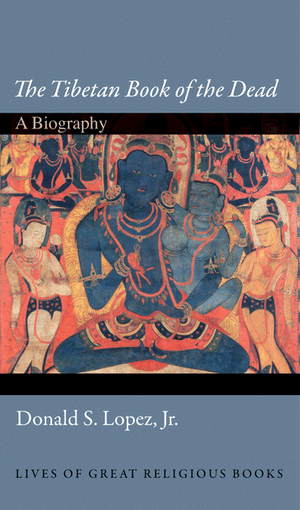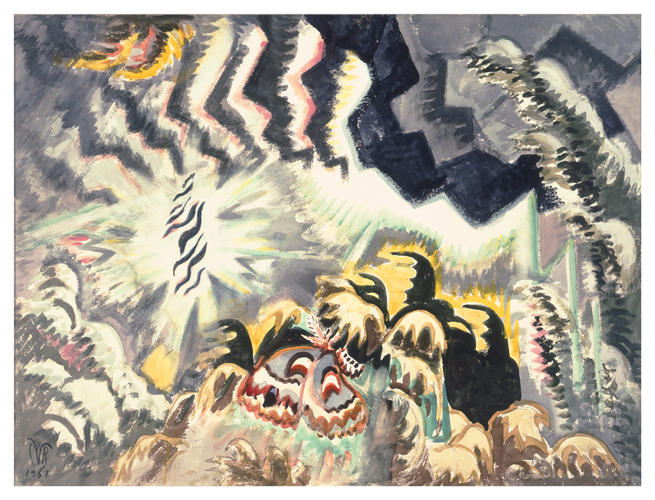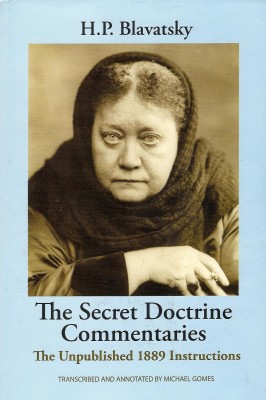K. Paul Johnson has posted a clarification to his comments about Blavatsky at the site,
History of the Adepts. At least we think it is Paul Johnson, as it is not given as coming from him. The person states that the posts are entirely his own and no one in the Church of Light reviews them in advance or necessarily agrees with them. This is good to know, but as all posts at that site are given under the pseudonymous “Admin,” and as Mr. Johnson’s name does not appear as their originator, and as the site still states that it is “Sponsored by the Church of Light,” this may lead to the conclusion that somehow the Church of Light sanctions what is given there. Perhaps they need to add a disclaimer that the opinions reflected in the posts of the pseudonymous “Admin” do not necessarily reflect the views of that organization.
We were somewhat surprised to see Mr. Johnson state in his blog that our review of his piece was considered an “attack” on him and the Church of Light, and an “outrageous” one at that. We fear he has misconstrued our remarks and intent. Perhaps, because he has been in the defensive mode for so long because of his writings and has been dealt with so harshly by some leading Theosophists, he has become overly sensitive and sees an “attack” (a word we never used in our piece, though often used by Theosophists in regard to his contention that Blavatsky faked the Mahatmas. Readers outside of the country should note that the word “attack” is used more freely in America than elsewhere: “out Constitution is under attack,” “our family values are under attack,” which translated into plain speak means that someone has disagreed with your viewpoint) where none is meant.
Surely Mr. Johnson is not saying that his writings are above critical inquiry? Or that any comment or criticism that may even suggest any other explanation than the one he gives is an “attack”? Over the past year and almost 150 posts, Blavatsky News has critiqued for our readers a number of academic and commercial publications mentioning Helena Petrovna Blavatsky. Some of the authors have actually written to thank us for our suggestions and the recognition we have given their work. Mr. Johnson is the only person who has reacted with such hostility. Though he has noted that his statement about the Varleys belonging to HPB’s “Inner Group” needs clarification. And if this needed reconsideration after being pointed out by us, why not look at other areas?
But this is really not about Mr. Johnson or the Church of Light but about our observation that his portrayal of Blavatsky in the piece reviewed left out “any exculpatory evidence on her [HPB’s] behalf.” By playing the victim card and claiming that he (and the Church of Light) has been attacked, “outrageously” attacked, Mr. Johnson adroitly attempts to shift the conversation away from the fact that his piece bashes Blavatsky to himself personally. It is somewhat ludicrous though for someone whose name appears nowhere as the originator of the posts on the site, History of the Adepts, and who uses the pseudonymous cover “Admin,” to be telling us what we should or should not be doing at here.
K. Paul Johnson points out that elsewhere at Blavatsky News he was quoted with approvingly. So, obviously, he was known and wasn’t “attacked” then. Mr. Johnson would be surprised at the range of opinion by those who write for this site. We are not all idolaters here, Mr. Johnson, but we are united by the belief that Helena Petrovna Blavatsky had a remarkable cultural impact which is worth reporting on, and during the past year we have covered a wide spectrum of opinion on our subject. But any site aspiring to giving news instead of just repeating what people have said must ask those tough questions of “What about…” when other view points are possible.
Anyway, taking his clarification at face value, we are happy to amend the headline of our post from “The Church of Light Bashes Blavatsky” to “Church of Light [Member] Bashes Blavatsky,” for as long as the site says it is “sponsored by the Church of Light” with no disclaimer of the contents then there is some connection. No one would have had much to say if he posted this material on his own blog (a headline of “K. Paul Johnson Continues to Bash Blavatsky” really isn’t “news,” it is a view held by many theosophists. He may not think his presentation is so but the perception exists). And to make it clearer that our comments are referring to the post by “Admin” in the link given to History of the Adepts, we have indicated so in brackets. Our comments relate to this piece and not to the whole of Johnson’s writings, which are a challenging contribution to theosophical history.





